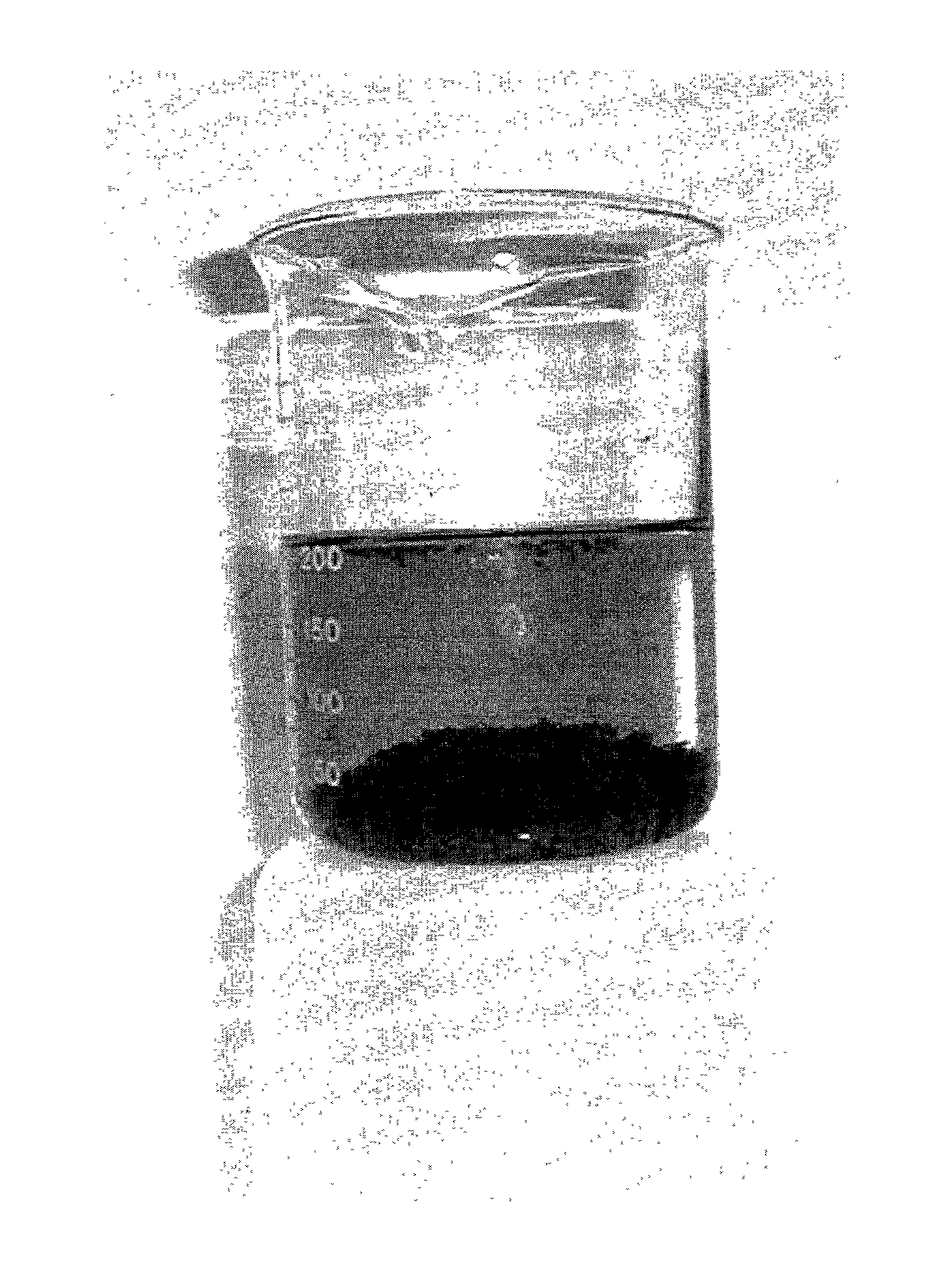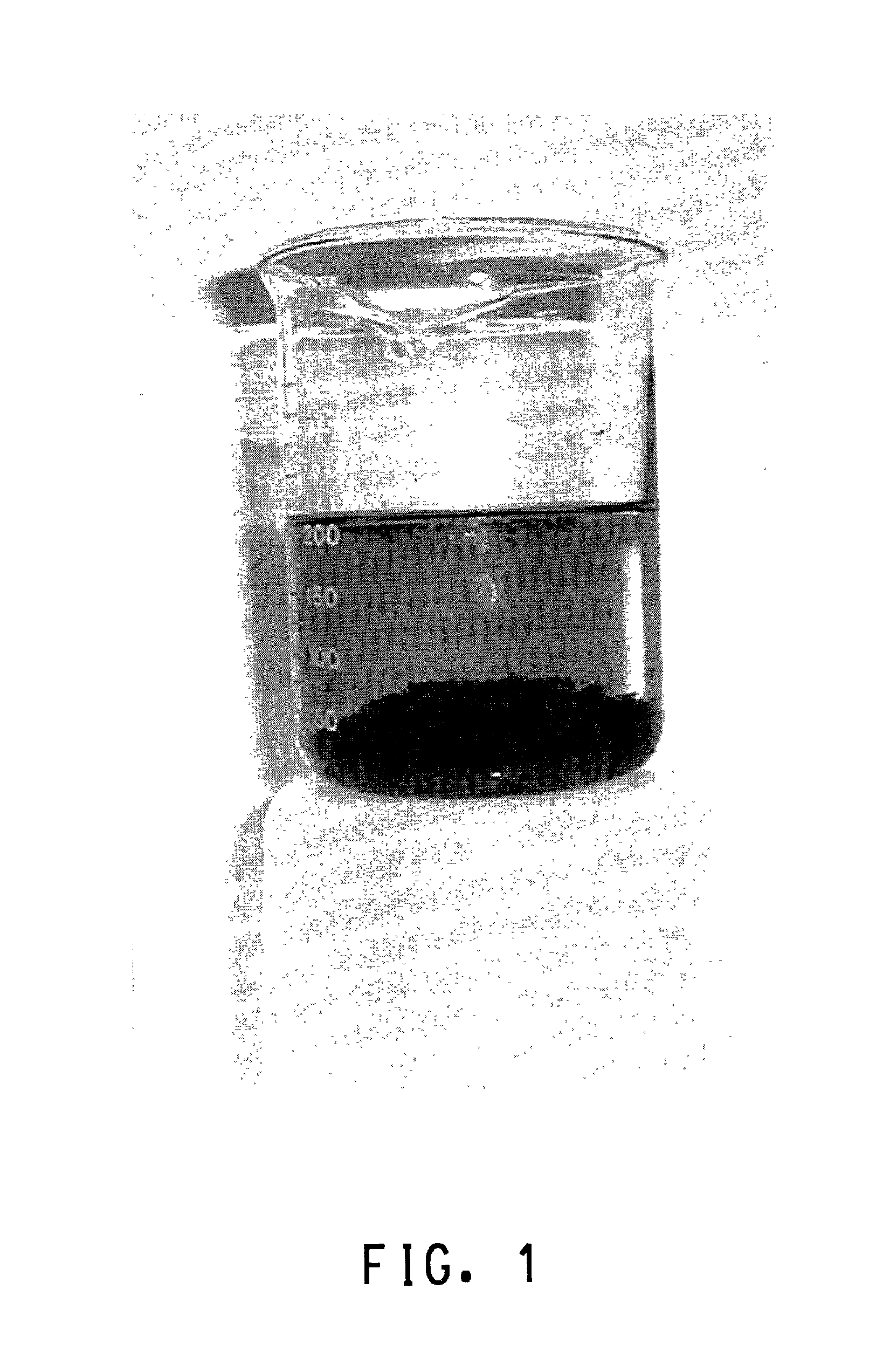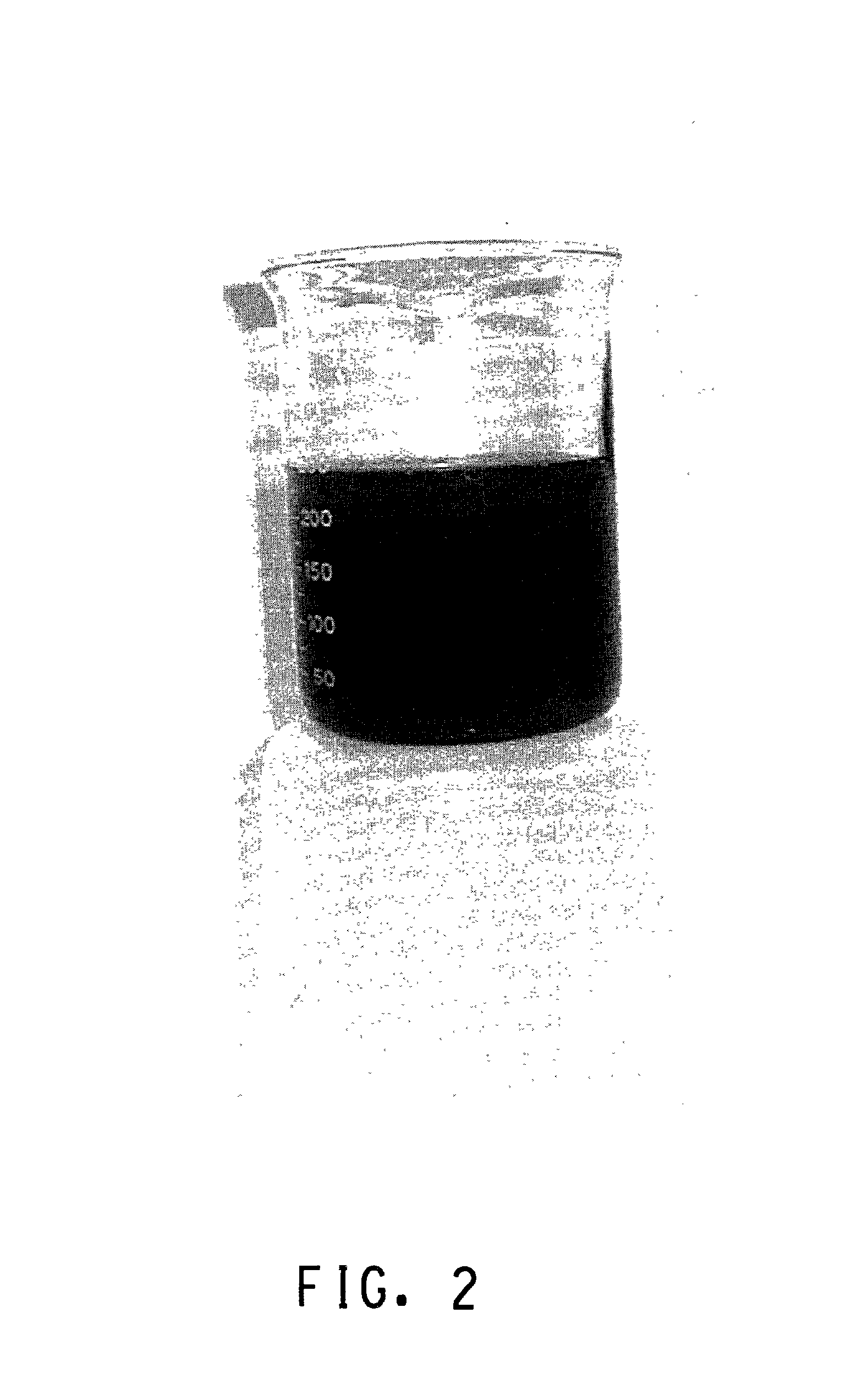Method for treatment of aqueous streams comprising biosolids
a biosolids and aqueous technology, applied in water/sewage treatment by ion exchange, separation process, waste water treatment from animal processing, etc., can solve the problems of low protein recovery rate, simple separation methods such as filtration, and inability to separate protein solids
- Summary
- Abstract
- Description
- Claims
- Application Information
AI Technical Summary
Benefits of technology
Problems solved by technology
Method used
Image
Examples
example 1
[0048]A sample of a wash water containing about 1000 ppm of un-flocculated protein containing biosolids was obtained from an Eastern Shore poultry processing plant. The initial turbidity was >200. The initial pH was about 7.
[0049]The following reagents were added in all of the runs to a beaker: high molecular weight cationic polyacrylamide, Percol 182®, available from Ciba Specialty Chemicals, Basel, Switzerland, 8 ppm; silica microgel solution, Particol® MX, 120 ppm (SiO2 basis), available from E. I. du Pont de Nemours and Company, Inc., Wilmington, Del. The amounts given were based on the solution weight of the wash water.
[0050]The reagents were added as follows.
[0051](1) 250 ml of the wash water was stirred at medium speed on a Fisher Scientific Model #120 MR magnetic stirrer, available from Fisher Scientific, Pittsburgh, Pa. Dilute sodium hydroxide or sulfuric acid was added to adjust to pH shown in Table 1.
[0052](2) Cationic polyacrylamide was added at time=0.
[0053](3) Silica m...
example 2
[0062]The poultry processing wash water of Example 1 was used with several different anionic inorganic colloids. The following anionic inorganic colloids were used: Ludox® SM colloidal silica, 30 wt % silica sol, surface area=300 m2 / g; Ludox® HS-30 colloidal silica, 30 wt % silica sol, surface area=230 m2 / g; Ludox® 130 colloidal silica, 30 wt % silica sol, surface area=130 m2 / g; Ludox® colloidal silicas are available from E. I. du Pont de Nemours and Company, Wilmington, Del.; BMA-670, low “S” value colloidal silica sol, surface area=850 m2 / g, available from Eka Chemicals AB, Bohus, Sweden; Colloidal silica sol, 4 nm, surface area=750 m2 / g, available from Nalco Chemical Company, Naperville, Ill.
[0063]Particol® MX, polysilicate microgel, surface area=1200 m2 / g, available from E. I. du Pont de Nemours and Company. The high molecular weight cationic organic polymer was Percol 182®.
[0064]The following procedure was followed for all of the runs:
[0065](1) In a beaker, while stirring at me...
examples 3 – 8
Examples 3–8
[0073]A second poultry processing wash water containing about 1390 ppm of biosolids was used in these examples. The initial turbidity was >200. The following reagents were added to the wash water per the quantities provided below in Tables 3–8: a low molecular weight cationic organic polymer, diallyldimethylammonium chloride polymer (polydadmac); anionic inorganic colloids: Nalco colloidal silica sol, Particol® polysilicate microgel, and bentonite clay; and; a high molecular weight cationic organic polymer, Percol 182®, polyacrylamide (PAM). Amounts of reagents added are provided in Tables 3–8, all amounts are in ppm, based on the solution weight of the wash water.
PUM
| Property | Measurement | Unit |
|---|---|---|
| size | aaaaa | aaaaa |
| pH | aaaaa | aaaaa |
| pH | aaaaa | aaaaa |
Abstract
Description
Claims
Application Information
 Login to View More
Login to View More - R&D
- Intellectual Property
- Life Sciences
- Materials
- Tech Scout
- Unparalleled Data Quality
- Higher Quality Content
- 60% Fewer Hallucinations
Browse by: Latest US Patents, China's latest patents, Technical Efficacy Thesaurus, Application Domain, Technology Topic, Popular Technical Reports.
© 2025 PatSnap. All rights reserved.Legal|Privacy policy|Modern Slavery Act Transparency Statement|Sitemap|About US| Contact US: help@patsnap.com



